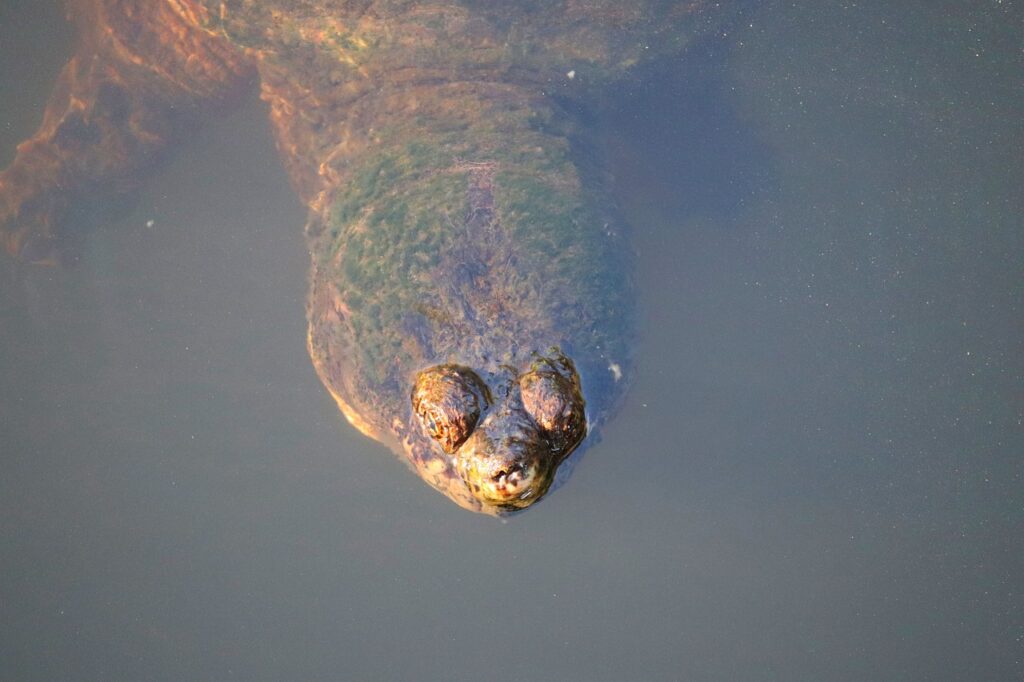Introduction
Snapping turtles, with their ancient appearance and formidable reputation, are known for their remarkable growth patterns. Understanding their size, growth, and the factors influencing these aspects is vital to their conservation and care. In this article, we’ll explore the size and growth of snapping turtles, delving into uncommon insights and expert advice that shed light on their intriguing life cycle.
The Mystique of Snapping Turtle Growth
Before we delve into the specifics of snapping turtle size and growth, it’s essential to grasp the unique aspects of their growth patterns.
Key Characteristics:
- Indeterminate Growth: Unlike many species that have fixed growth limits, snapping turtles exhibit indeterminate growth, which means they continue to grow throughout their lives.
- Sexual Dimorphism: Males and females of snapping turtles may exhibit differences in size, with females generally being larger.
Size Variations Across Species
Snapping turtles come in various species, and the size of these species can vary significantly.
Common Snapping Turtle (Chelydra serpentina)
Size Characteristics:
- Common snapping turtles are considered mid-sized among snapping turtle species.
- They typically reach a carapace (shell) length of 8 to 14 inches, with exceptionally large individuals exceeding 18 inches.
Size Differences by Gender:
- Females are often larger than males, and they can reach the upper end of the size range.
Alligator Snapping Turtle (Macroclemys temminckii)
Size Characteristics:
- The alligator snapping turtle is the largest freshwater turtle in North America.
- These turtles can attain enormous sizes, with some individuals reaching carapace lengths of up to 32 inches.
Size Differences by Gender:
- As with common snapping turtles, females of the alligator snapping turtle species are typically larger.
Suwannee Snapping Turtle (Chelydra serpentina osceola)
Size Characteristics:
- Suwannee snapping turtles, a subspecies of the common snapping turtle, are similar in size to their parent species.
- They range from 8 to 14 inches in carapace length.
Size Differences by Gender:
- Like the common snapping turtle, female Suwannee snapping turtles tend to be larger than males.
Growth Factors and Influences

Several factors influence the growth of snapping turtles. Understanding these influences is essential for their conservation and proper care.
Diet
Growth Factors:
- Diet significantly impacts the growth of snapping turtles.
- A diverse and nutritious diet, including animal proteins and aquatic plants, promotes healthy growth.
Growth Behavior:
- Young snapping turtles experience rapid growth, while their growth rate slows as they age.
- Providing a balanced diet throughout their lives is crucial for maintaining healthy growth.
Temperature
Growth Factors:
- Temperature plays a role in determining the growth rate of snapping turtles.
- Warmer temperatures generally accelerate growth, as turtles are ectothermic and rely on external heat sources.
Growth Behavior:
- In areas with colder climates, snapping turtles may exhibit slower growth rates.
- Elevated water temperatures can promote feeding and metabolic activity, contributing to growth.
Habitat and Space
Growth Factors:
- Adequate habitat and space are crucial for unhindered growth.
- Crowded or confined conditions can hinder growth, especially in captive settings.
Growth Behavior:
- In the wild, snapping turtles may roam over wide ranges, seeking ideal feeding and basking sites.
- In captivity, providing a spacious and well-maintained enclosure is essential for healthy growth.
Gender and Reproduction
Growth Factors:
- Gender influences the growth of snapping turtles, with females generally growing larger.
- Reproductive activity, such as egg production, can impact female growth.
Growth Behavior:
- Males tend to mature at smaller sizes compared to females.
- Female snapping turtles may experience growth spurts during periods of increased reproductive activity.
Uncommon Insights into Snapping Turtle Growth
Longevity and Growth
Snapping turtles can live for several decades, and their indeterminate growth means they continue to grow throughout their lives. It’s not uncommon to encounter snapping turtles that are over 100 years old, showcasing their remarkable longevity.
Size and Behavior
The size of snapping turtles can influence their behavior. Larger individuals tend to be more sedentary, while younger and smaller turtles are often more active and exploratory. Understanding these behavioral differences is essential for managing captive turtles.
Female Growth and Reproduction
For female snapping turtles, growth is closely linked to reproduction. They require ample resources to produce eggs, and this can influence their growth rate. Therefore, providing them with the right nutrition and habitat conditions is crucial for maintaining a healthy breeding population.
Conclusion
Snapping turtles, with their indeterminate growth patterns and distinct size differences between species, are enigmatic creatures. Understanding the factors influencing their size and growth is essential for their conservation and care. By providing a balanced diet, maintaining suitable habitat conditions, and respecting their unique growth patterns, we can contribute to the well-being of these ancient and intriguing reptiles. Dispelling the myths surrounding their growth and longevity allows us to appreciate these creatures in a new light and ensure their continued existence in the wild and in captivity.



